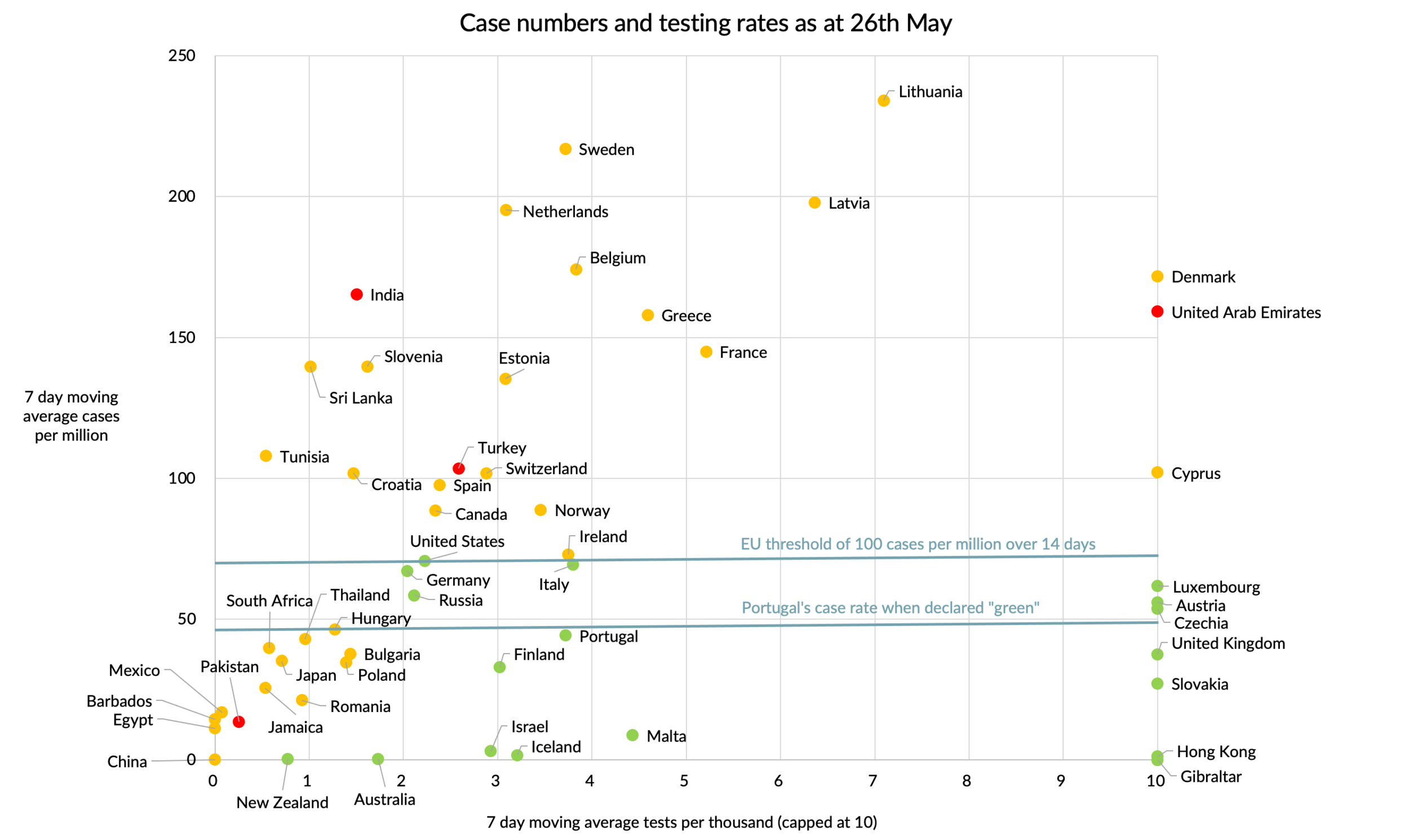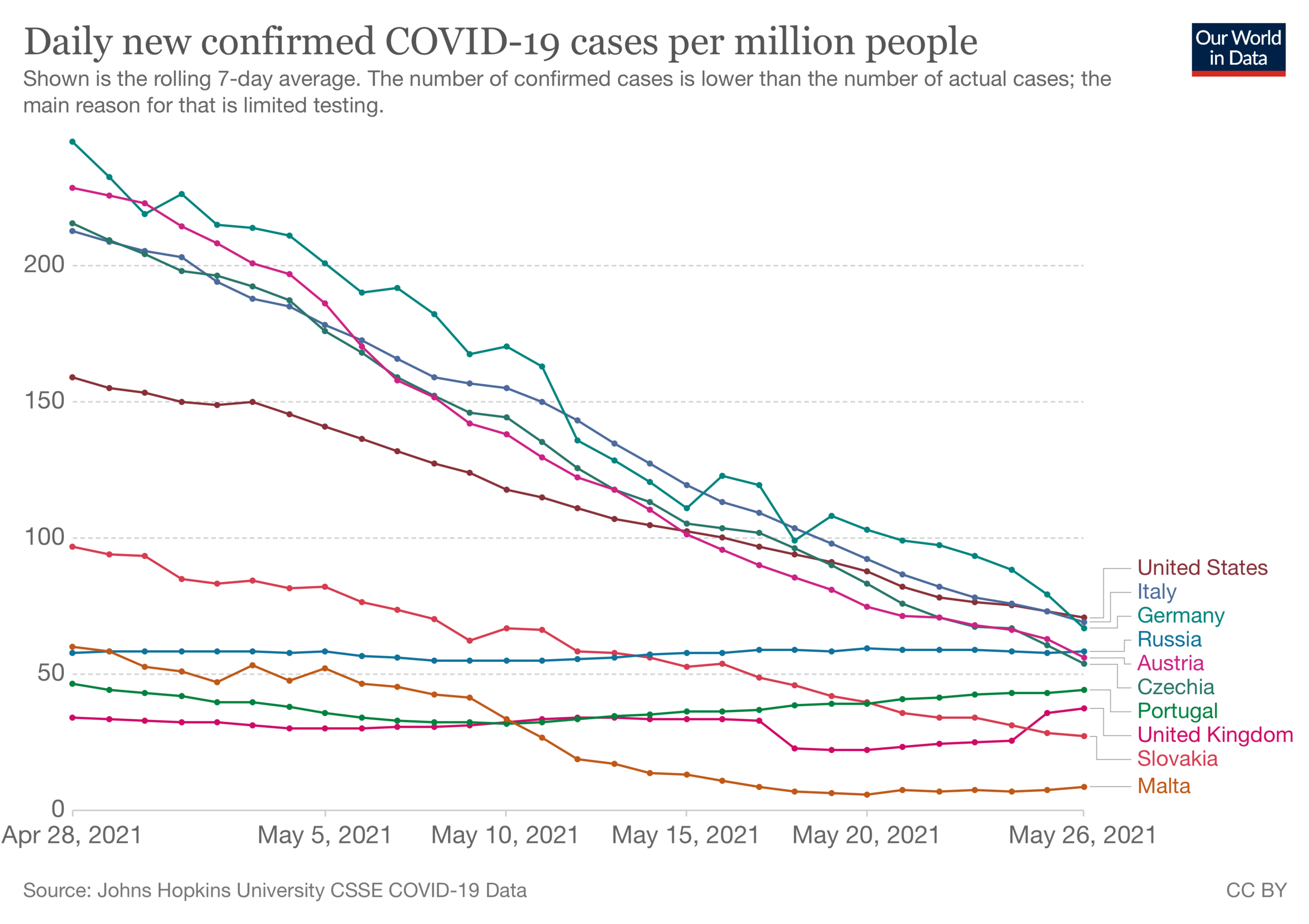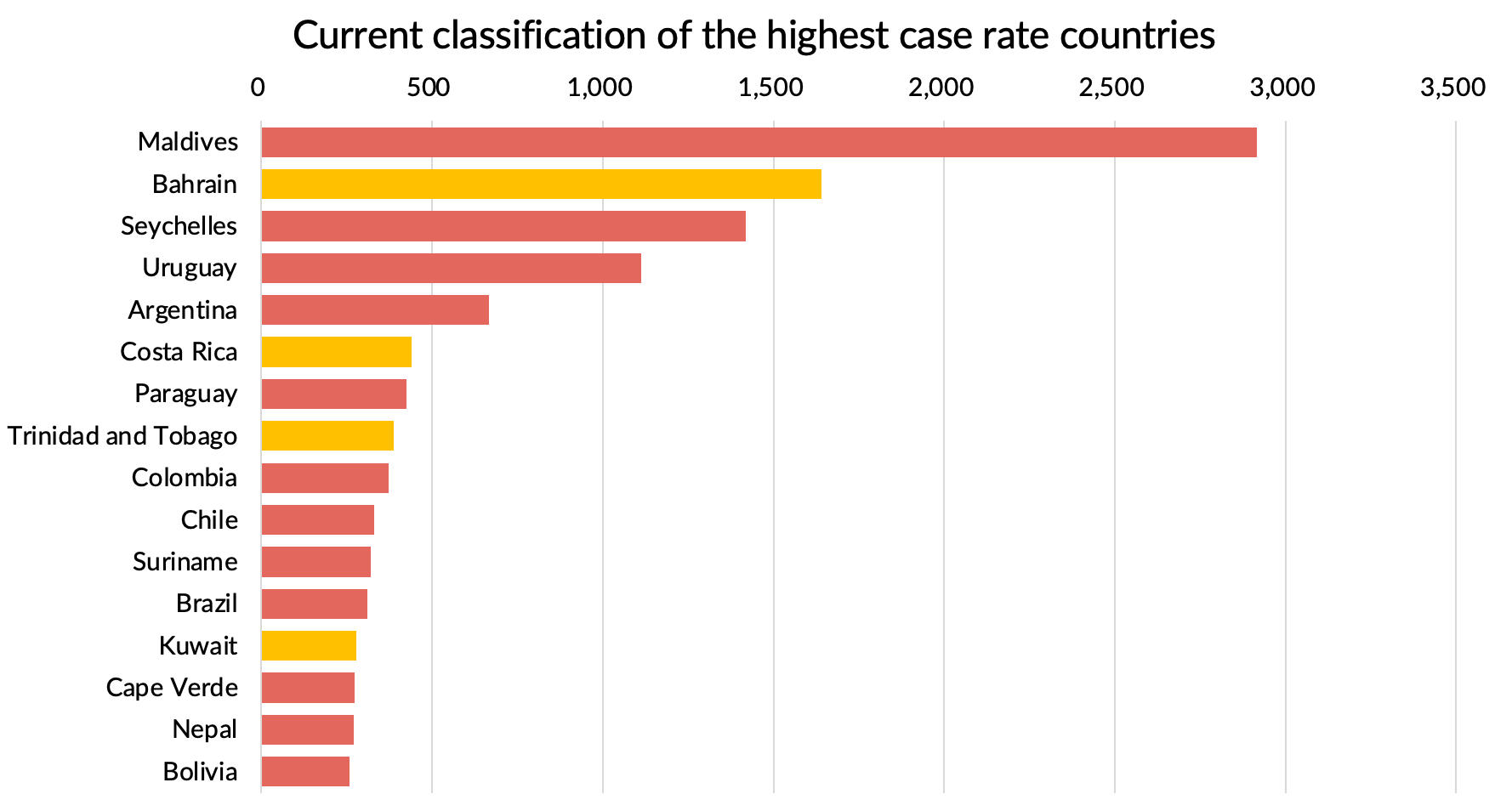Waiting for the lights to go green
We are due another update soon on the UK government’s traffic light ratings. These govern the travel restrictions which apply on a country by country basis and dictate what quarantine and testing requirements apply. Although this wasn’t initially apparent, the government has now said that they are advising against non-essential travel to countries on the amber list, making “green status” even more important than it already looked.
I’m not quite sure exactly when we will get this update. The government has said it would review the list “every three weeks starting in June”. Tomorrow, it will be three weeks since the first announcement, so that’s the earliest we might hear something. If an announcement comes that quickly, any changes would apply from June 7 if they give the same notice period as applied last time. So technically that might fit the description. However, the Independent apparently thinks the announcement will be some time next week (June 1-4) with the changes taking effect a week later. The Telegraph thinks it will be June 7. Whatever the date, I thought it was timely to have another go at predicted what might be on the list, as I did in this previous post.
Despite making something of a song and dance about being completely transparent about the criteria and data they are using to make decisions on the list, that isn’t really true as I explained in this post. But the conclusion I came to when analysing what countries made it onto the green list last time was that the case rate seemed to be the main thing driving the decisions. So let’s see what the latest data tell us about which countries might qualify based on that criterion.
Case rates and testing
As before, I’ve looked at the countries with relevance as UK outbound leisure markets, based on 2019 data from the ONS International Passenger Survey. In the following chart, I show both the case rate and the testing rate. The government and its advisors look at testing figures as a guide to whether apparently low infection rate figures can be trusted.
I’ve coloured the countries amber by default, as per government policy, except for countries that are already on the red list. I’ve then classified any country with a daily case rate of 71 per million or below as green, provided the testing rate is also above 2 per thousand. I don’t know whether that is a correct testing threshold or not. My logic for choosing it is that it would be hard for the government to argue that the figures from Germany and the United States are not reliable due to inadequate testing, and they are only just above 2 per thousand. On the other hand, India has 1.5 per thousand and there is much comment in the media about how the cases numbers are being understated due to the lack of testing. Australia and New Zealand don’t meet the testing threshold, but I’ve made an exception for them. They don’t really have community transmission and their testing programmes can therefore be much more targeted.
Why did I choose 71 per million as a case rate threshold? It is the equivalent of the EU’s proposed threshold of 100 cases in a 14 day period per 100,000 population. We don’t know whether the UK government is using that threshold, or something lower. So I’ve also shown the case rate that Portugal had when the government put it on the green list. So somewhere between the two lines is presumably an acceptable rate.
Source: Our World in Data, GridPoint analysis. Note that China testing rate is not disclosed.
As you can see, there are three additional countries that seem like clear cases for getting onto the green list - Malta, Finland and Slovakia. The other countries which are below the “Portugal” line are already green, with the exception of Hong Kong. Nothing has really changed in Hong Kong recently and it wasn’t included on the green list last time, presumably because it is being lumped in with China.
What is going on with China? You could make a good case for it being on the green list based on reported case numbers, which are essentially zero. They don’t report testing statistics, so maybe the government doesn’t trust the figures. But it probably has more to do with politics. Until the current ban on flights between Europe and China gets lifted and China reopens its borders, I think it will stay off the green list. That is unlikely to happen until the Chinese vaccination programme is well advanced, which will probably take until September.
There are seven other countries that could be classified green if the EU threshold for case rates is used. Five of these are in the EU: Austria, Czechia, Germany, Italy and Luxembourg. We also have Russia, but that is likely to fall foul of politics too. And finally there is the United States. It is exactly on the line, so whether it gets included or not will depend on which set of voters ministers are more worried about. Putting the US on the green list would be massive news, but with the government under fire for failing to put India on the red list early enough, I suspect they’ll want to be seen to be taking a cautious line. So the US is likely to just “miss the cut” this time round. But I do think it will be hard to find rational grounds to exclude it at the following review point later in June, unless “variants of concern” provide the excuse.
The government has also confirmed that it will look at the islands of Spain and Greece separately from the mainland. With case numbers lower in the islands, I do think there is a good chance that the Spanish and Greek islands will make it onto the green list too.
Data and decision lag
In making my assessments, I’ve used the latest data available at the time of writing this blog. When the government published the data it said it had used to support the classifications announced on May 7, the data they used was pulled on April 29. So there was an 8 day lag built into their decision-making system. I would like to think that they will have cut that down now they are doing it for the second time, but fast responsiveness to changes in the data and quick decision-making is not something this government is known for.
If the announcement happens on June 1 and the lag hasn't been reduced, then the assessments will be based on data from three days earlier than the figures I’ve used. That matters because the case rates for most of my green list candidates have been falling continually, as you can see from the following chart. That might mean countries like Germany, Italy and especially the United States “miss the bus” and have to wait another three weeks to catch the next one.
It takes two to tango
It is worth acknowledging at this point that which countries are on the green list may become increasingly irrelevant for would-be travellers and airlines.
The rise in cases of the India variant in the UK has led to an increasing number of European countries placing restrictions on travellers and in some cases on flights from the UK. At the moment, the big tourist destinations in the Mediterranean have not done so, but there is obviously a risk of that if the outbreaks can’t be contained.
More candidates for the red list?
I have also looked at which countries might get added to the red list, based purely on infection rates. Here is a chart of the countries in the world with the highest reported case rates (as usual, 7-day average reported cases per million).
As you can see, most of them are already on the red list, but Bahrain, Costa Rica, Trinidad and Tobago and Kuwait are not. So expect those to be added shortly.
Source: Our World in Data, GridPoint analysis
Following the science?
Given how much heat the government is taking about the delays in adding India to the red list, you might wonder why the four red list candidates haven’t already been added. But ministers are also under heavy pressure to open up travel, not only from beleaguered airlines and other travel companies, but also from parts of the media chafing against what many see as unjustified state restrictions on liberty.
My guess is that the politicians are carefully trying to craft the next set of announcements to throw a bone to the travel industry whilst also playing to the “securing our borders” gallery. If, as I expect, they take a cautious approach to what gets added to the green list, there may be only three countries added, plus some islands. Being able to announce four additions to the red list at the same time might look like a nice “balanced package”. The need to fine-tune the message is probably what the 8-day decision lag is all about and also why they are packaging everything up into three weekly set pieces rather than just changing the classifications as soon as the data changes, which you and I might see as a more logical approach.
Whenever a politician tells you that they are “following the science”, you can be sure they are “following the politics” even more closely.




